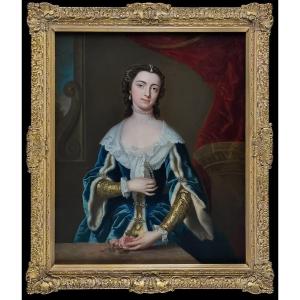Thomas Bardwell (1704-1767)
The sitter in this luxurious portrait is Henrietta Jeffreys; she was an early 'blue-stocking', a keen writer and traveller, biographer of van Dyck, and friend of Lady Mary Wortley Montagu and Lady Hertford. She has been depicted wearing an azure blue velvet dress with white fur lining, over a rich golden brocaded bodice and white lace edged smock. The attire and the red swag curtain afford the portrait a theatricality (the clothing is perhaps masquerade attire). The drapery has been defined with lightness and dexterity - the treatment of the lace is superb. Its remarkable quality is evidenced by the fact that it was painted by the proficient English painter Thomas Bardwell, who is known to have painted the sitter on more than one occasion (see photo).
Bardwell was described as “through the power of genius and dint of application, acquired a degree of perfection in his art”. He wrote a book in 1756 (which enjoyed great popularity and repeated editions after his death) entitled “The Practice of Painting and Perspective Made Easy”, resulting from a study of seventeenth-century paintings in East Anglian collections. Remarkably, he was granted a Crown copyright for his book, which gave him the sole rights - a practise that was highly exceptional in the eighteenth century. No doubt can exist that Bardwell’s book was held in great esteem for almost a century after it was written. The book is also considered as one of the most original productions of its kind written in England.
Henrietta Jeffreys was the only child of John Jeffreys, 2nd Baron Jeffreys, she took after her remarkable grandfather, the celebrated Judge Jeffreys, rather than her dissolute father who died at the age of only 28. She was born on 15th November 1698 in Leicester Square, London. On 14th July 1720 she married Thomas Fermor, 2nd Lord Lempster, who had already inherited his father's titles and estates (he was the son of William Fermor, 1st Baron Lempster and Lady Sophia, daughter of Thomas Osbourne, 1st Duke of Leeds). The next year their first child was born, and her husband was created Earl of Pomfret. In 1725 she became Lady of the Bedchamber to the Princess of Wales, and her husband became Knight of the Bath and Master of the Horse to Queen Caroline. When the Queen died in 1737, Henrietta retired from Court and the next year, with her husband and their two eldest daughters, Lady Sophia (who later married 2rd Earl Granville) and Lady Charlotte who later married the Hon. William Finch) they set off on a three-year European tour. Horace Walpole described Lady Charlotte as “the cleverest girl in the world; speaks the purest Tuscan like any Florentine.” They spent a year in France and then went south to Italy reaching Genoa on 12th June 1739. They visited Sienna and settled in Florence in December staying at the Palazzo Rudolfi, where they were visited by Horace Walpole and Lady Mary Wortley Montagu. There are numerous accounts in contemporary letters of them in society on the continent. They finally left Italy in March 1741 and returned to England via Rome, Bologna, and Venice. When back in England, the following February, they attended the Duchess of Norfolk's masquerade and were noted to have "trudged in like pilgrims, with vast staffs in their hands!". Our portrait is datable to this period.
In 1753 Henrietta's husband died and she was faced with the threat that her extravagant son would dissipate his inheritance. She decided to buy from him the great collection of 135 statues bought by his grandfather from the Arundel collection, and in 1755 she presented them to Oxford University. In 1805 three volumes of her correspondence with Frances Countess of Hertford were published.
She kept a journal from 1736 until her death in 1762, and this is a valuable source of information on the changing tastes of the time, and in particular, of the Countess's remarkable connoisseurship. In the 1740's she recorded an extensive tour of houses in the Palladian style, including Foot's Cray, Wanstead, Copt Hall, Langley Park, and Cliveden. This probably stemmed from the influence of William Kent whose name first appears in the Journal in 1742. The Journals show a consistent and passionate reverence for the past, for medieval ruins and relics and for great early buildings like Dover Castle. In 1757 some land adjoining Lord Granville's house in Arlington Street became vacant, and she began to build the picturesque Pomfret Castle, a fine Gothick mansion overlooking St James's Park, a fitting culmination of her Gothick enthusiasm.
She died on 15th December 1761 and was buried at Easton Neston. The estate was inherited by the eldest son George, who, through his extravagant spending, had to sell the furniture and some other parts of the collection to pay his debts.
Thomas Bardwell, was born, probably at Worlingworth, Suffolk, in 1704, son of John Bardwell, a farmer at Worlingworth. Thomas established himself as a decorative painter at Bungay, Suffolk and by 1732 had a thriving business, employing at least one apprentice, a business that he handed over to his younger brother Robert, to concentrate on portrait painting. His first known dated painting is a conversation piece from 1736, the 'Brewster Family of Wrentham Hall, Suffolk'. Thereafter he established a good local clientele and may also have worked in London, as 1740–1741, he produced the portraits John Campbell, Duke of Argyll, and David Garrick, newly acclaimed as Richard III at Goodman's Fields. In 1752 he journeyed to Scotland, via Yorkshire, painting several portraits and some decorative work. Thomas was back in the south by the end of 1753 and from 1759 to the end of his life thrived as a portraitist in Norwich.
His work is similar in composition and technique to a number of painters who were his contemporaries including Thomas Hudson, John Vanderbank, Charles Jervas, Allan Ramsay, Maria and William Verelst, and John Heins, and has often been confused with theirs. There are also compositional references to Van Dyck as is evident by the modelling of the fingers holding the rose in our portrait. In addition, many sitters wear the shiny ‘Van Dyck’ costume which was fashionable for portraiture at the time. Formats range from portrait busts to life-size full lengths.
There is (or was) a memorial in the church of St Mary’s, Bungay St. Mary, Suffolk to “Thomas Bardwell, portrait painter, died 9 September 1767, aged 63”.
Provenance: Sotheby’s London 10th July 1991 [Lot 126], as “Thomas Bardwell, Portrait of a Lady, Half length, standing, wearing a blue velvet dress edged with fur and lace, decorated with pearls, and blue and gold brocade sleeves and under-dress, a rose in her left hand, oil on canvas, 99 x 82.5cm”
Measurements: Height 120cm, Width 102cm, Depth 10cm framed (Height 47.25”, Width 40”, Depth 4” framed








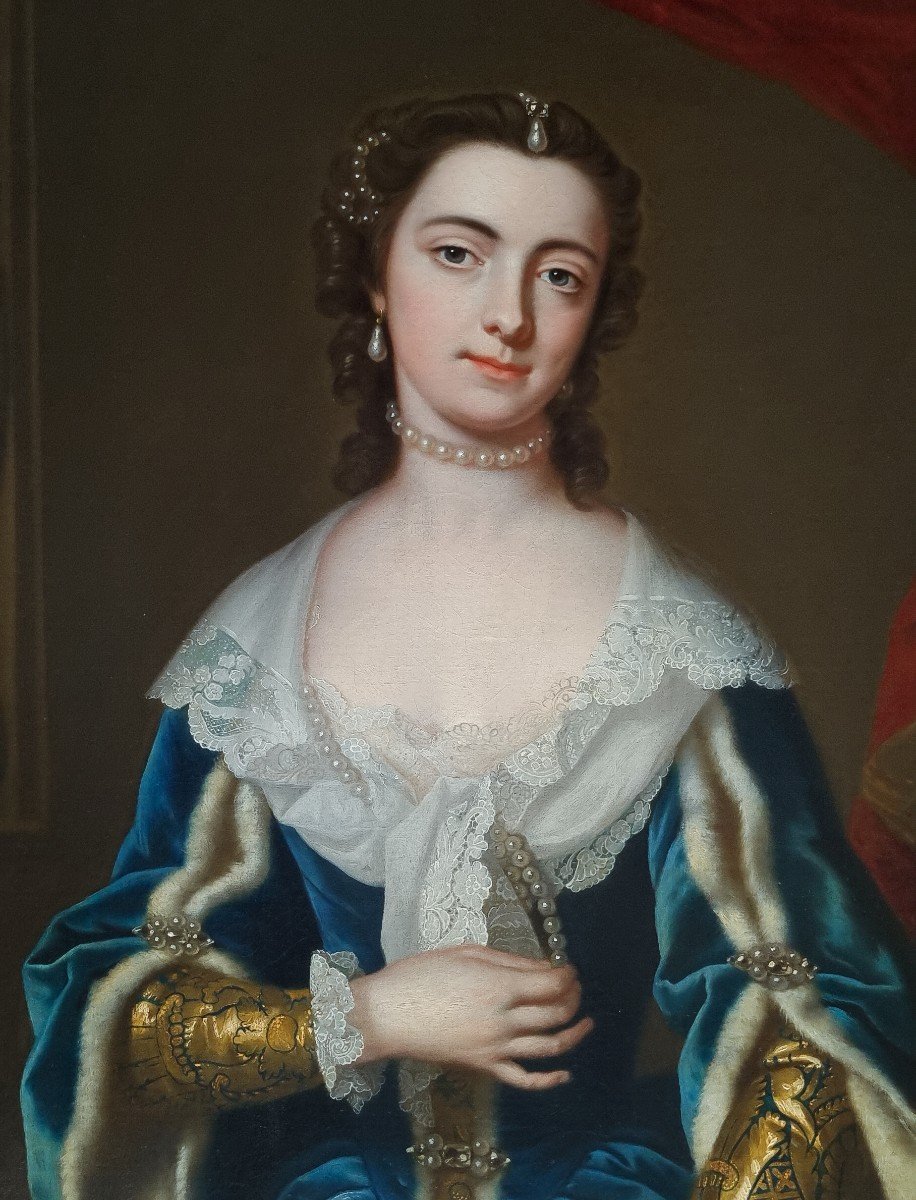

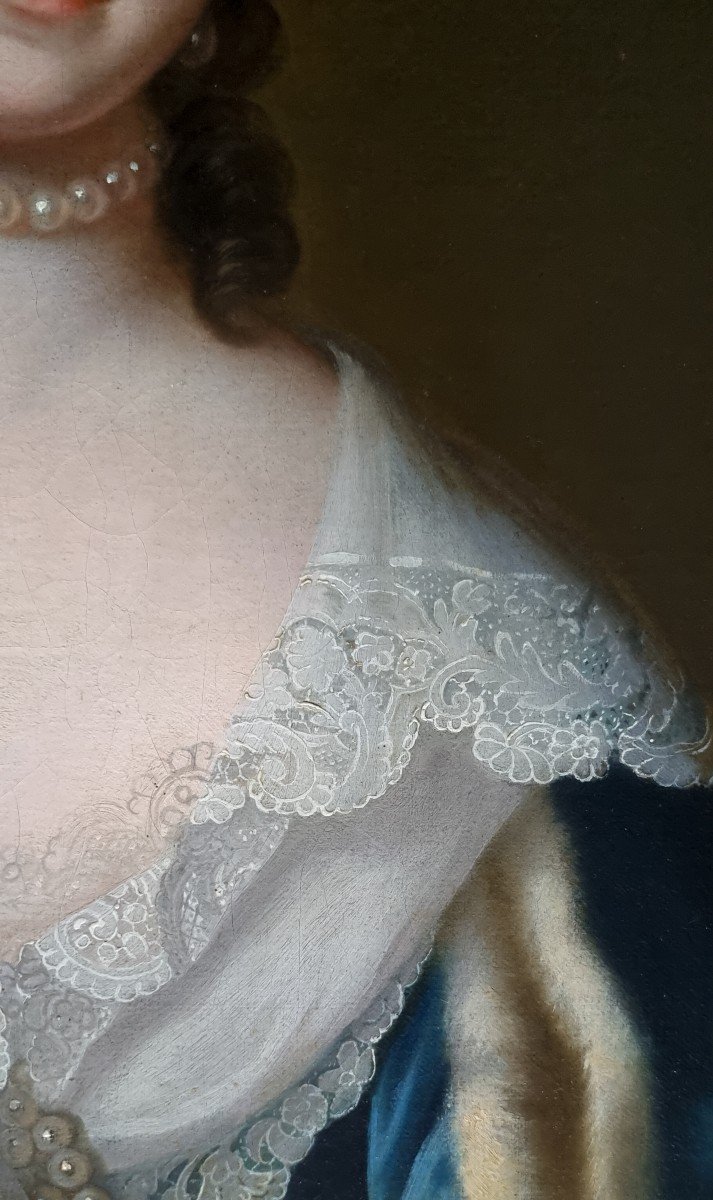



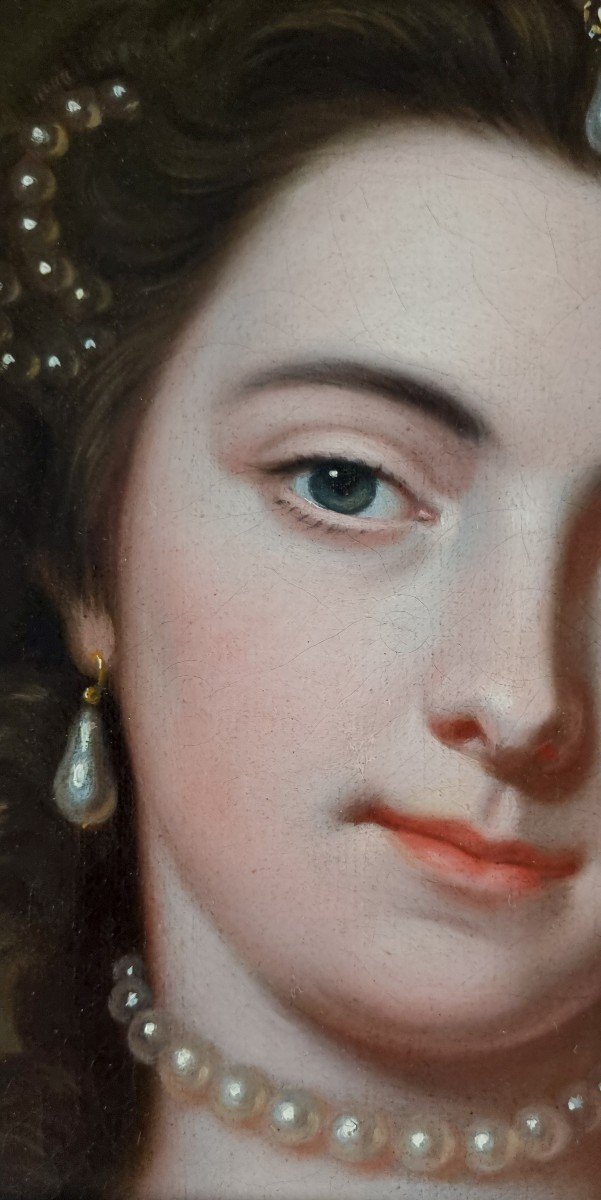





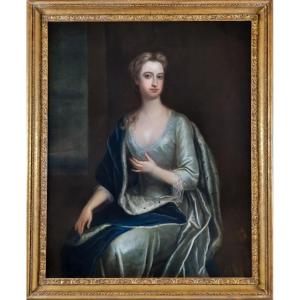
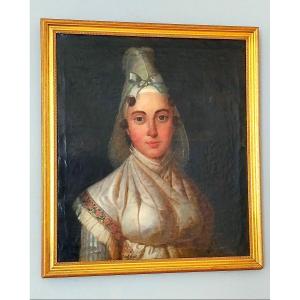
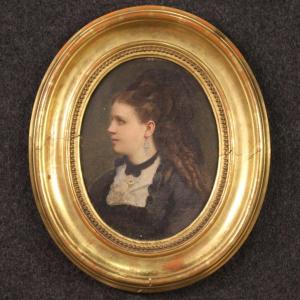

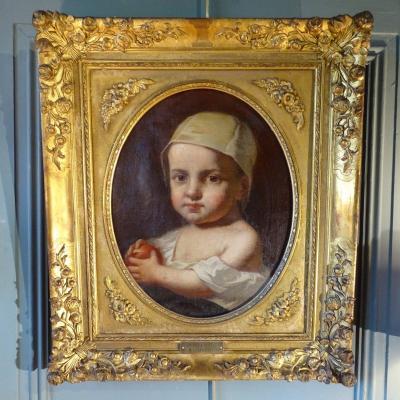





 Le Magazine de PROANTIC
Le Magazine de PROANTIC TRÉSORS Magazine
TRÉSORS Magazine Rivista Artiquariato
Rivista Artiquariato
